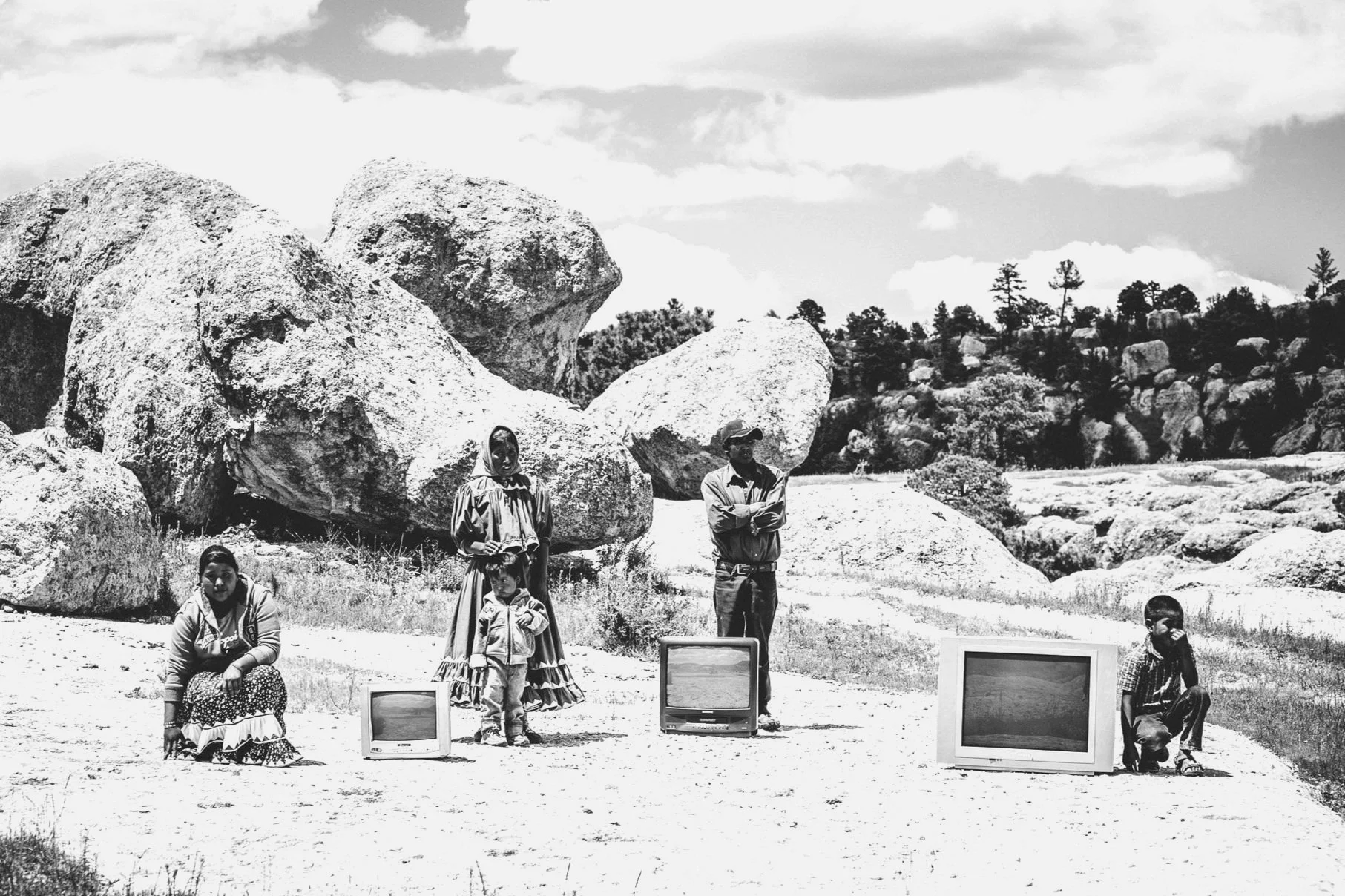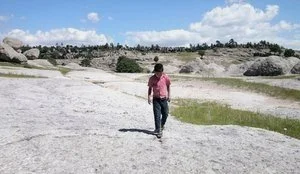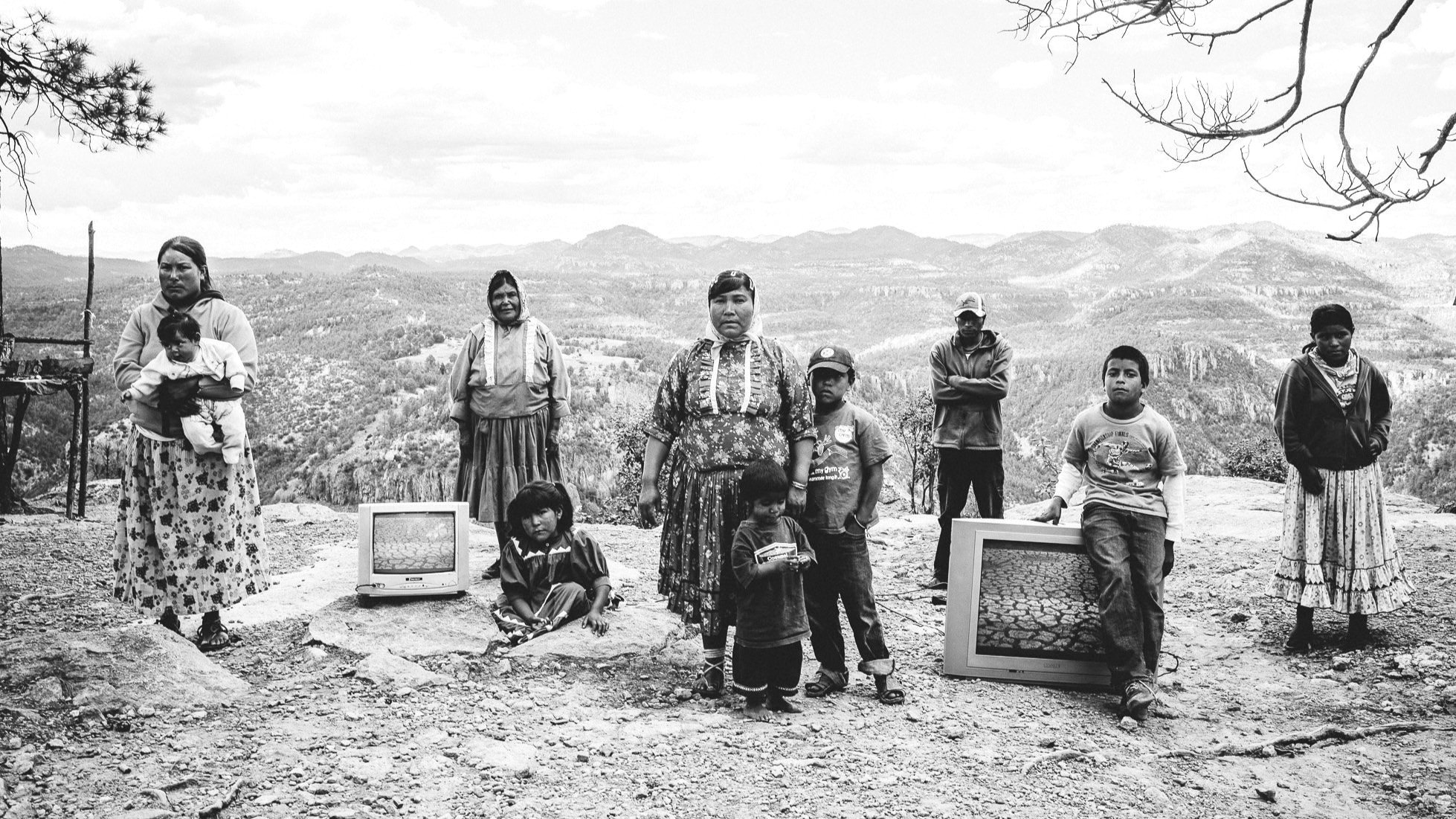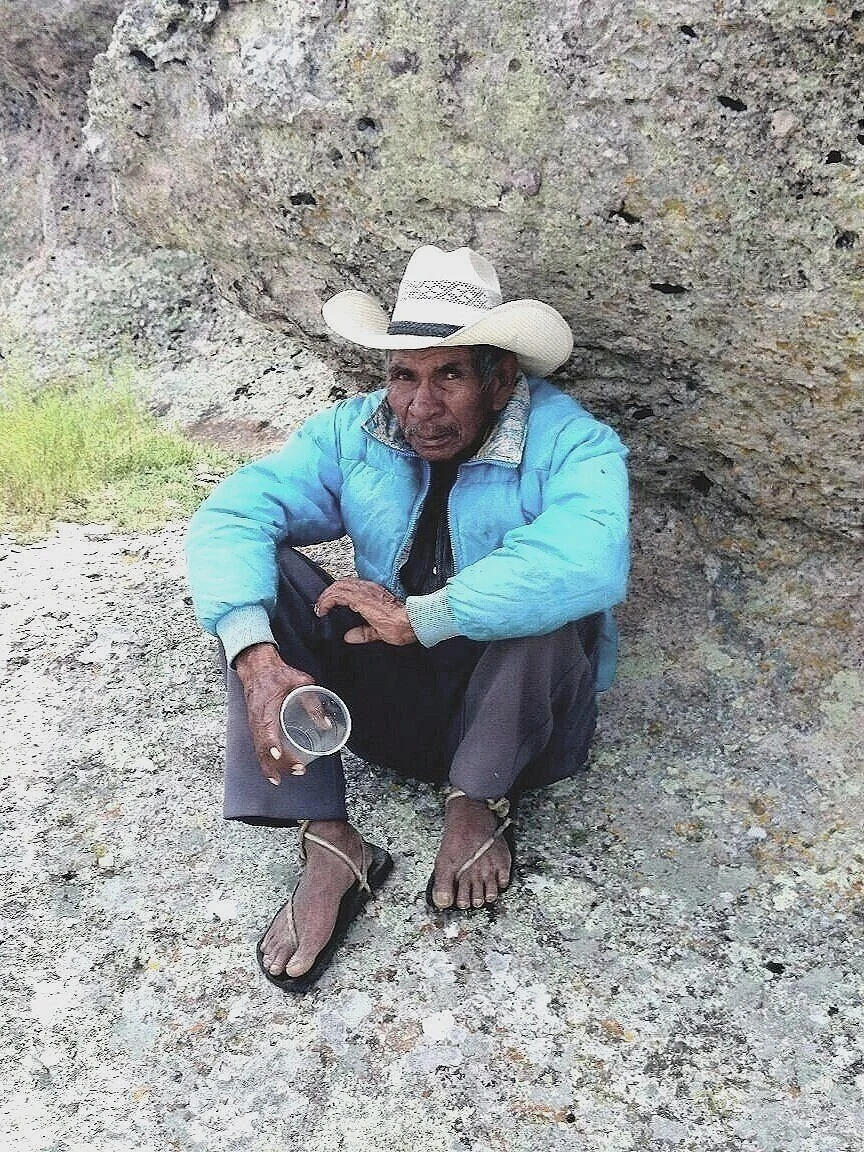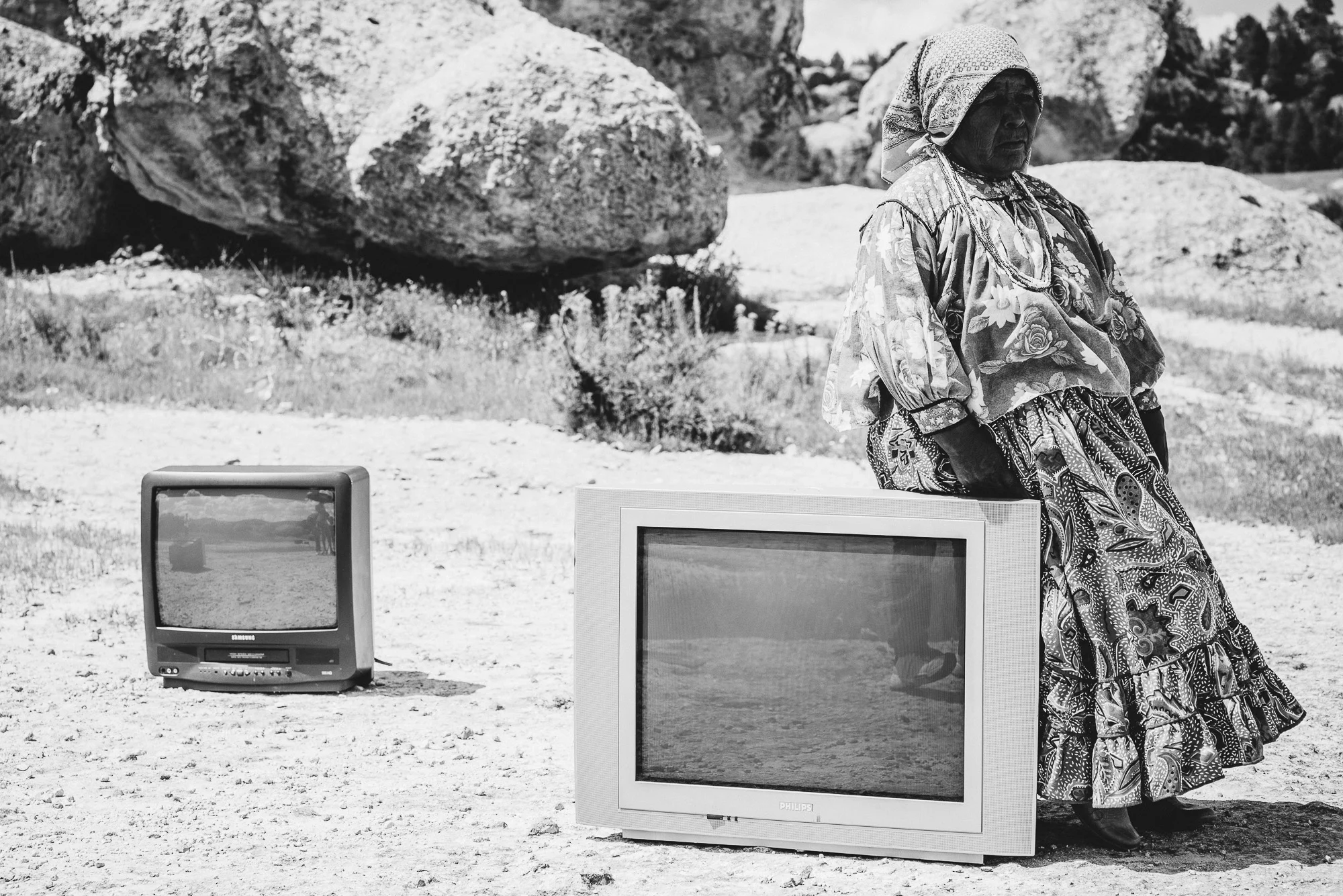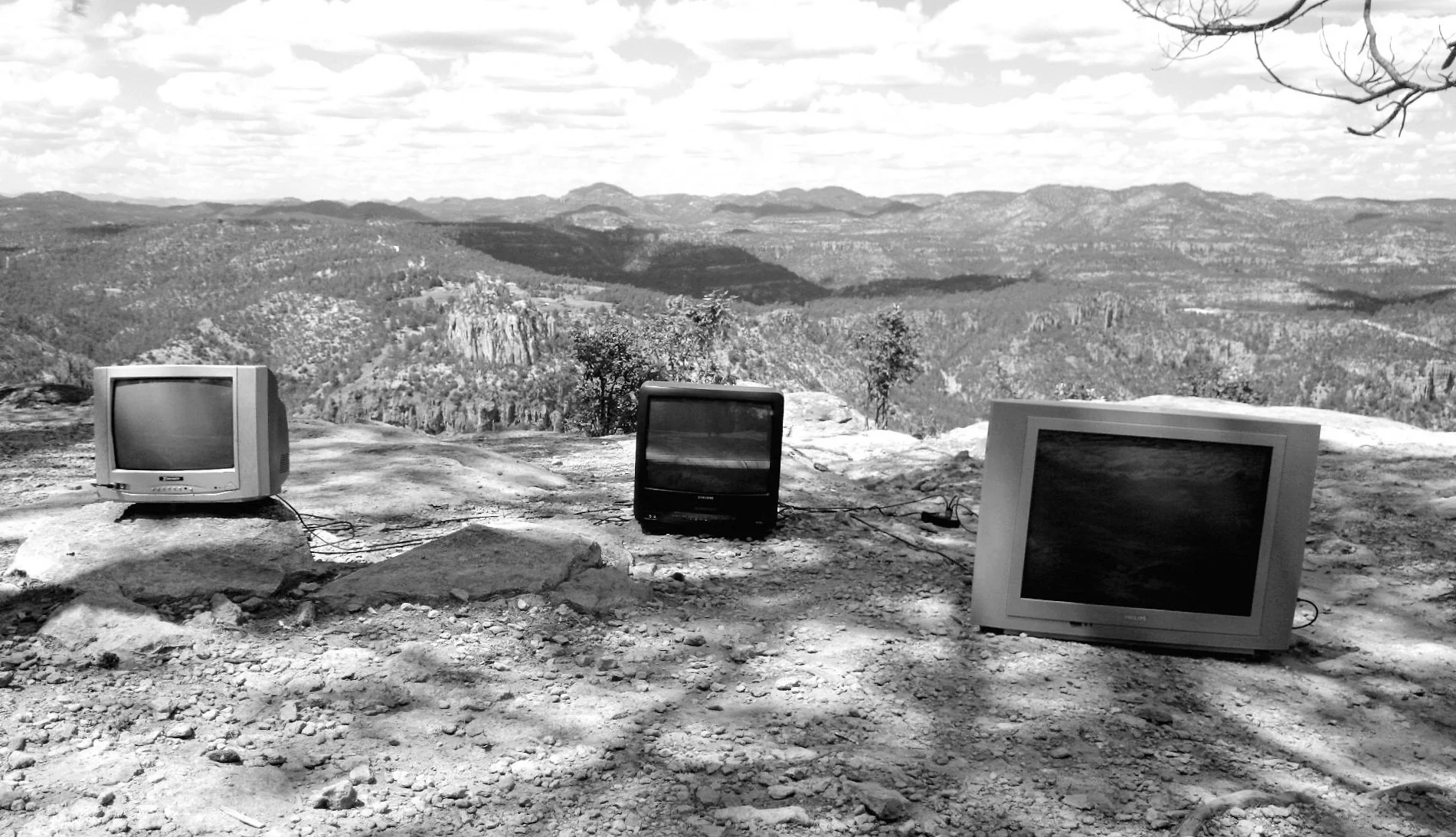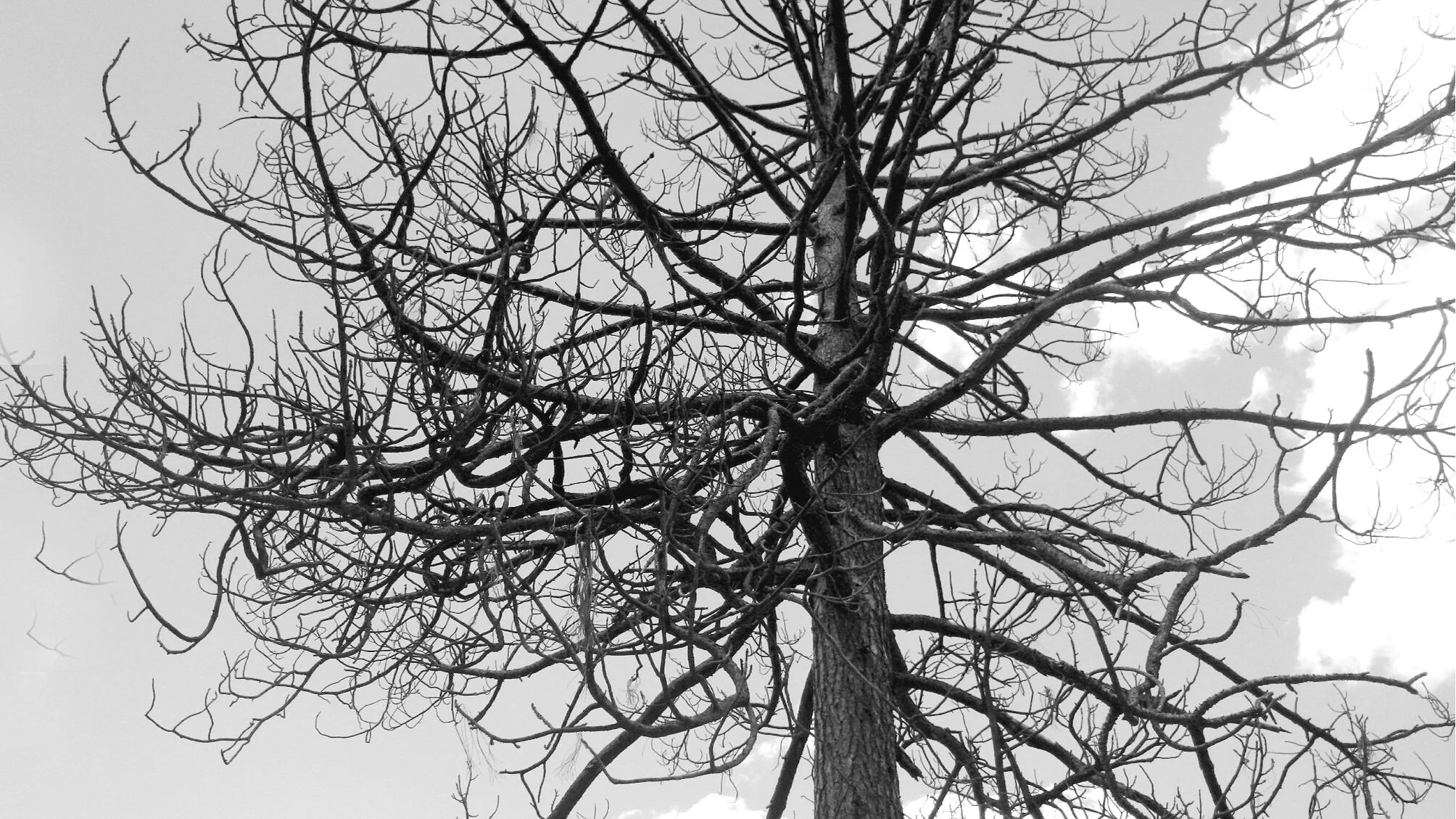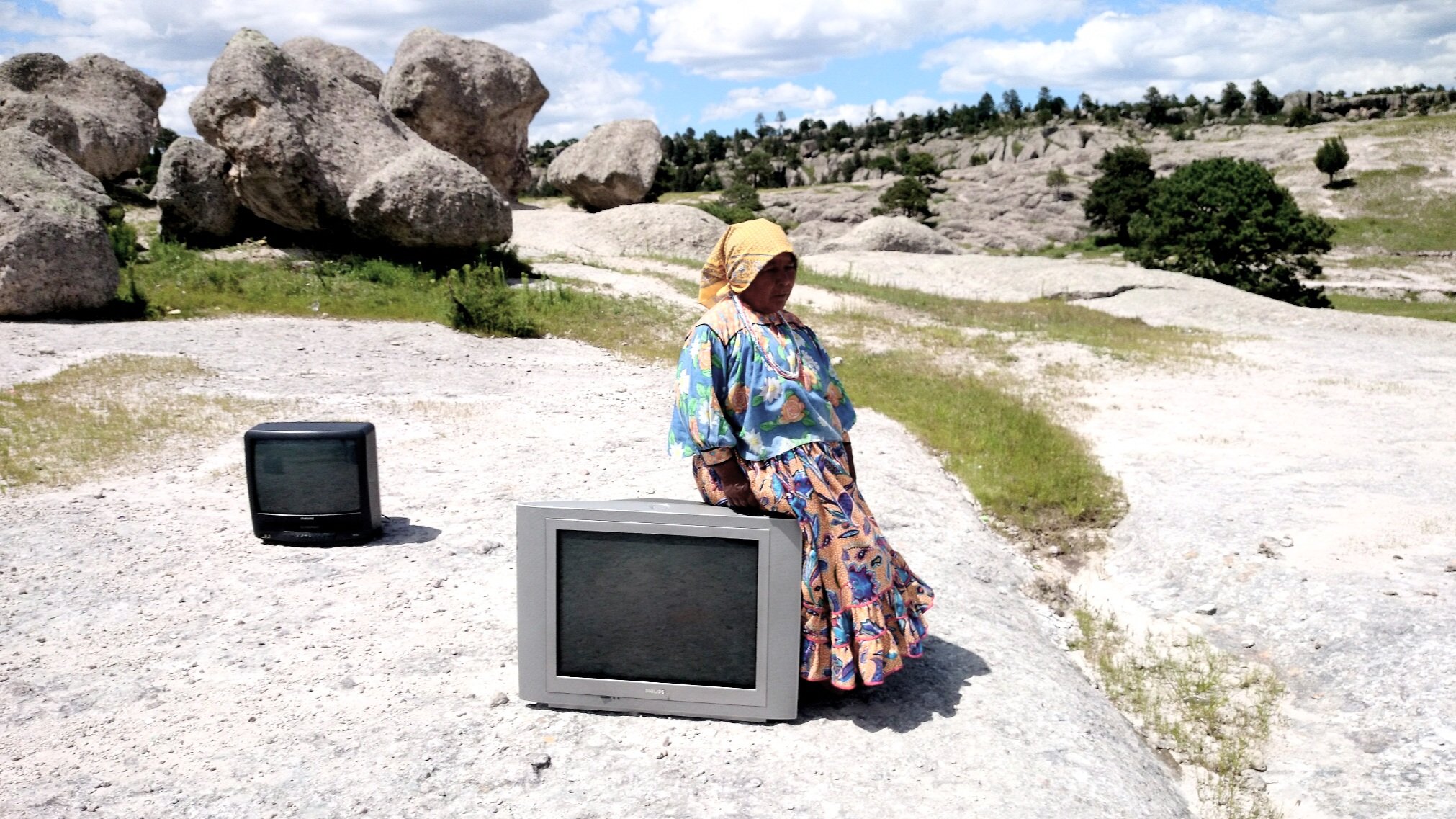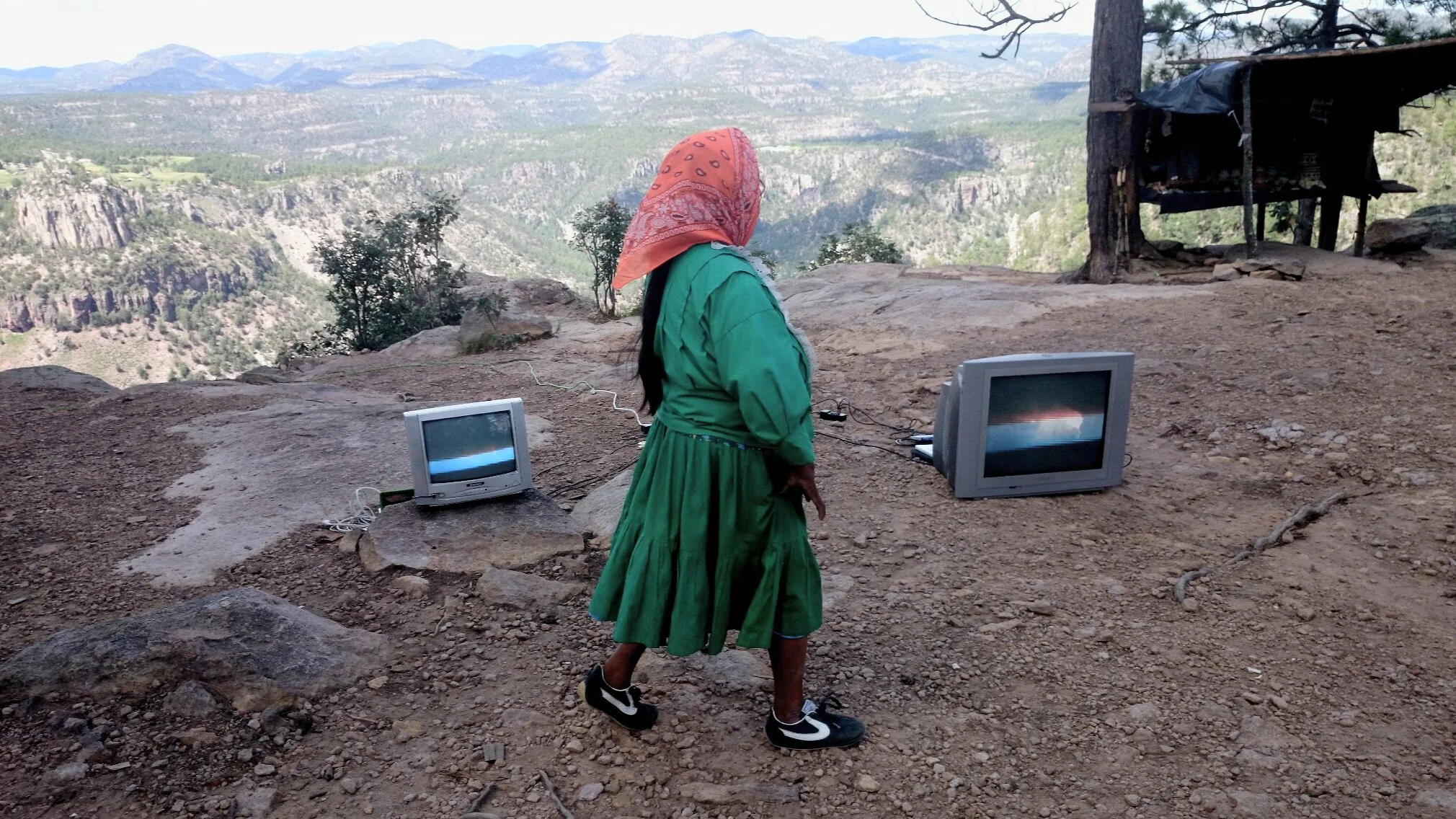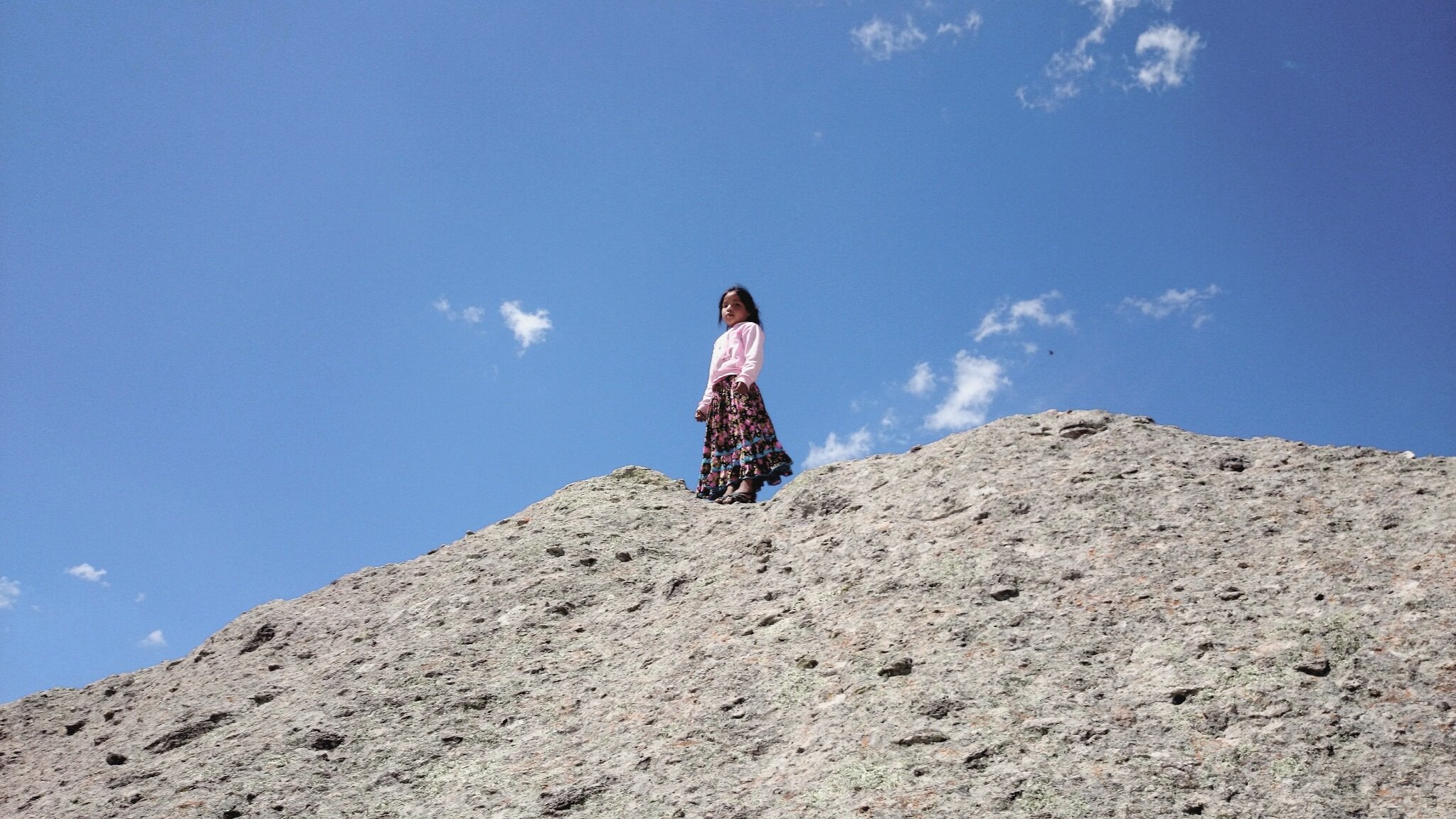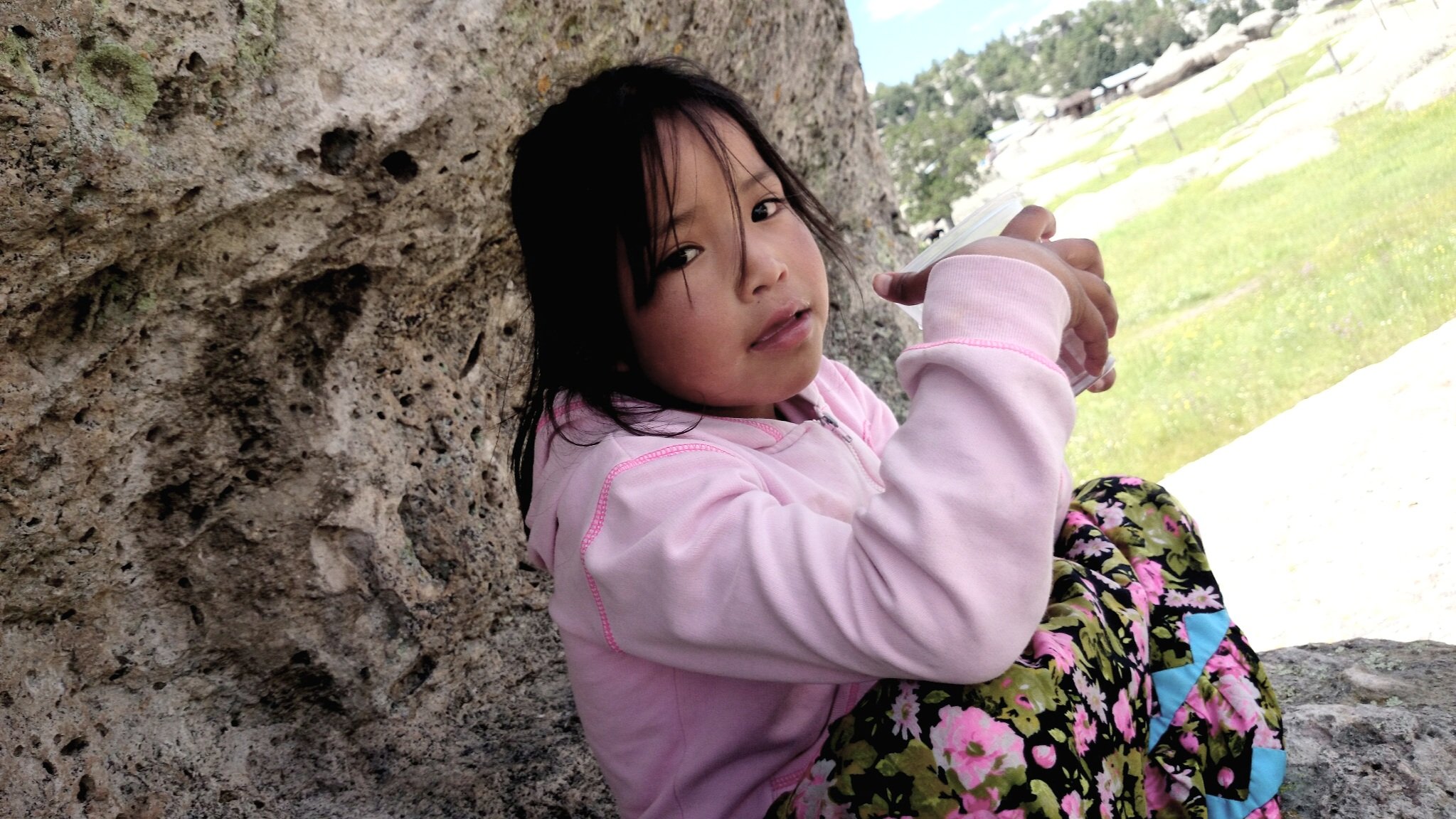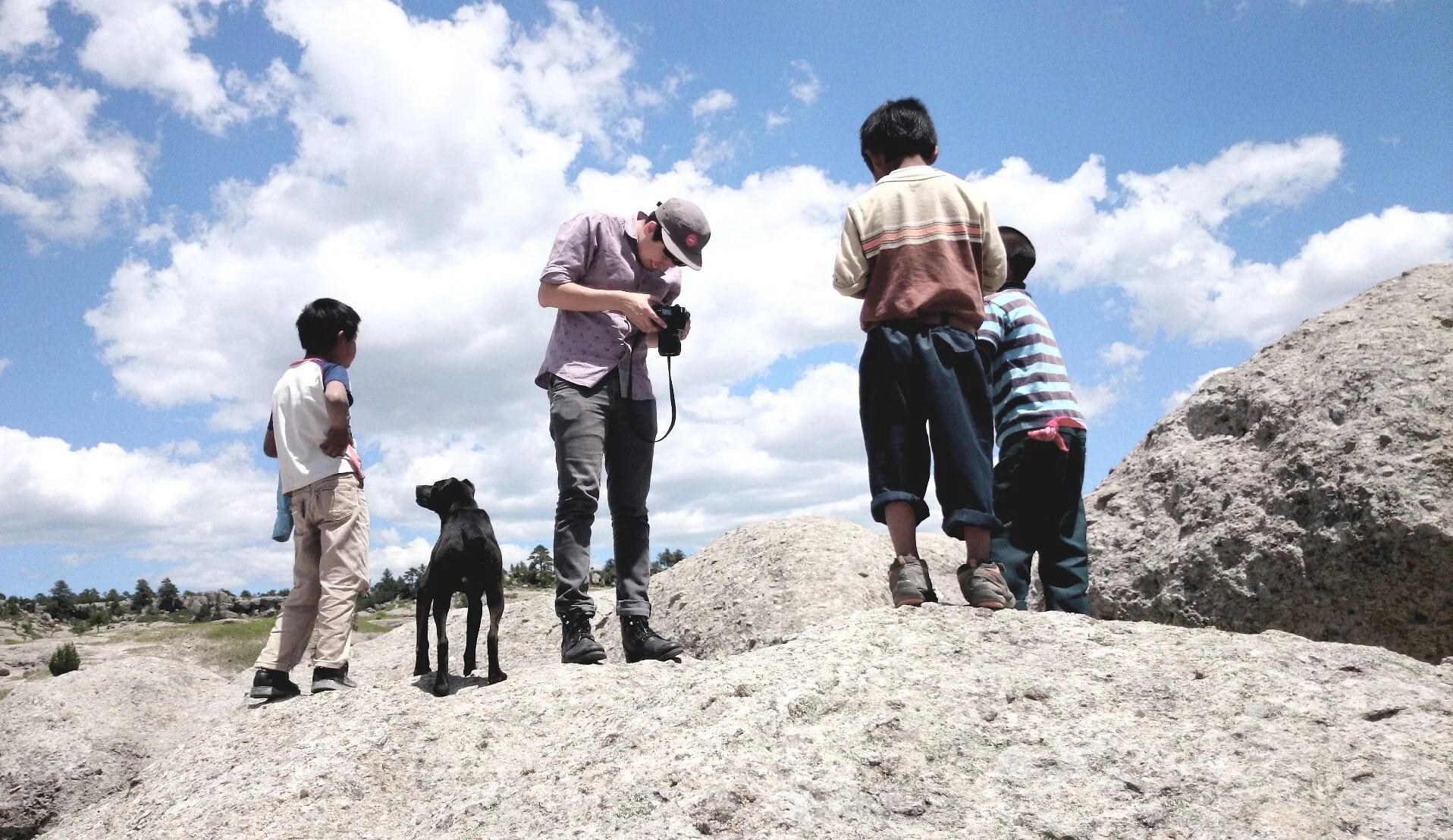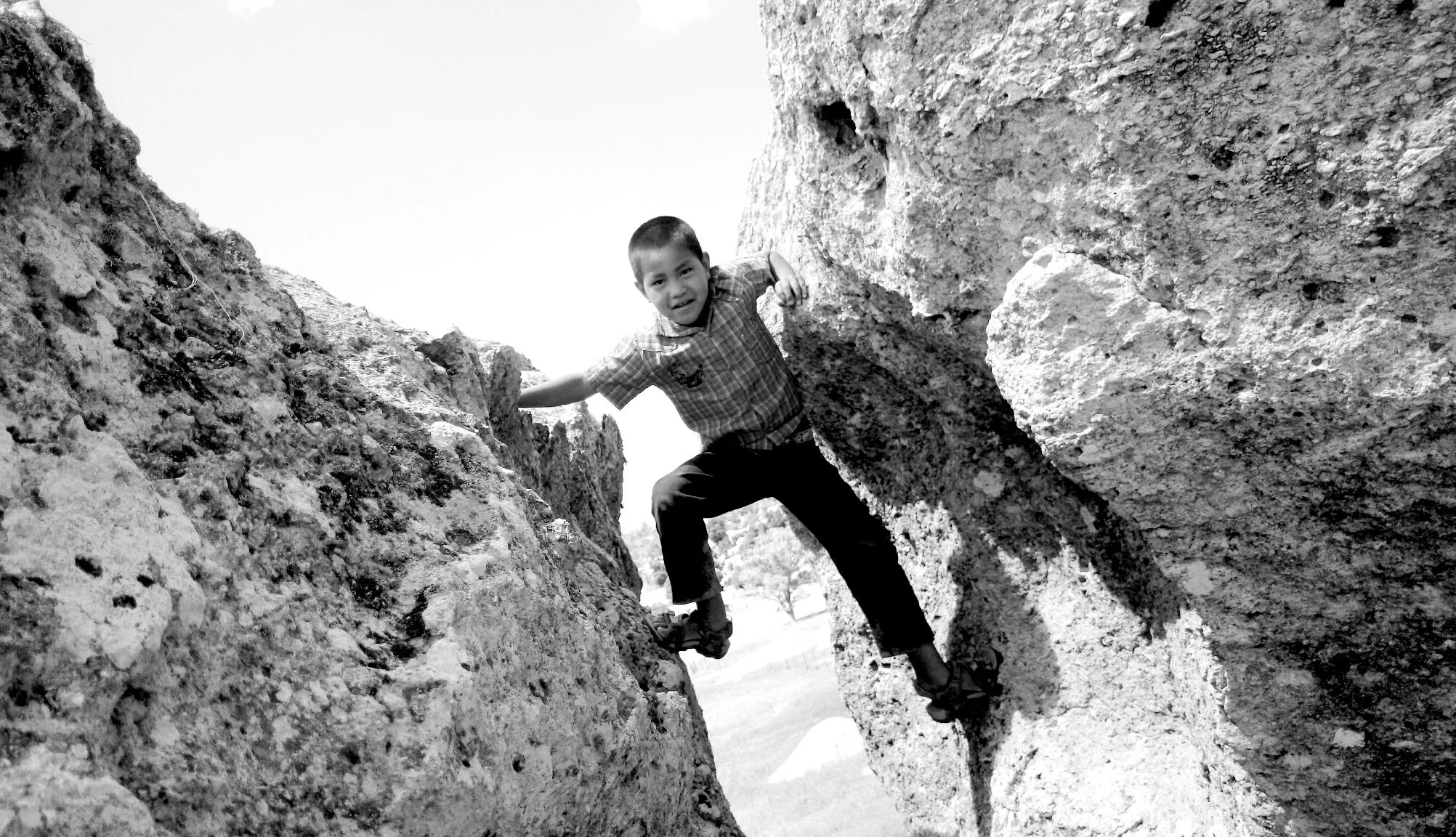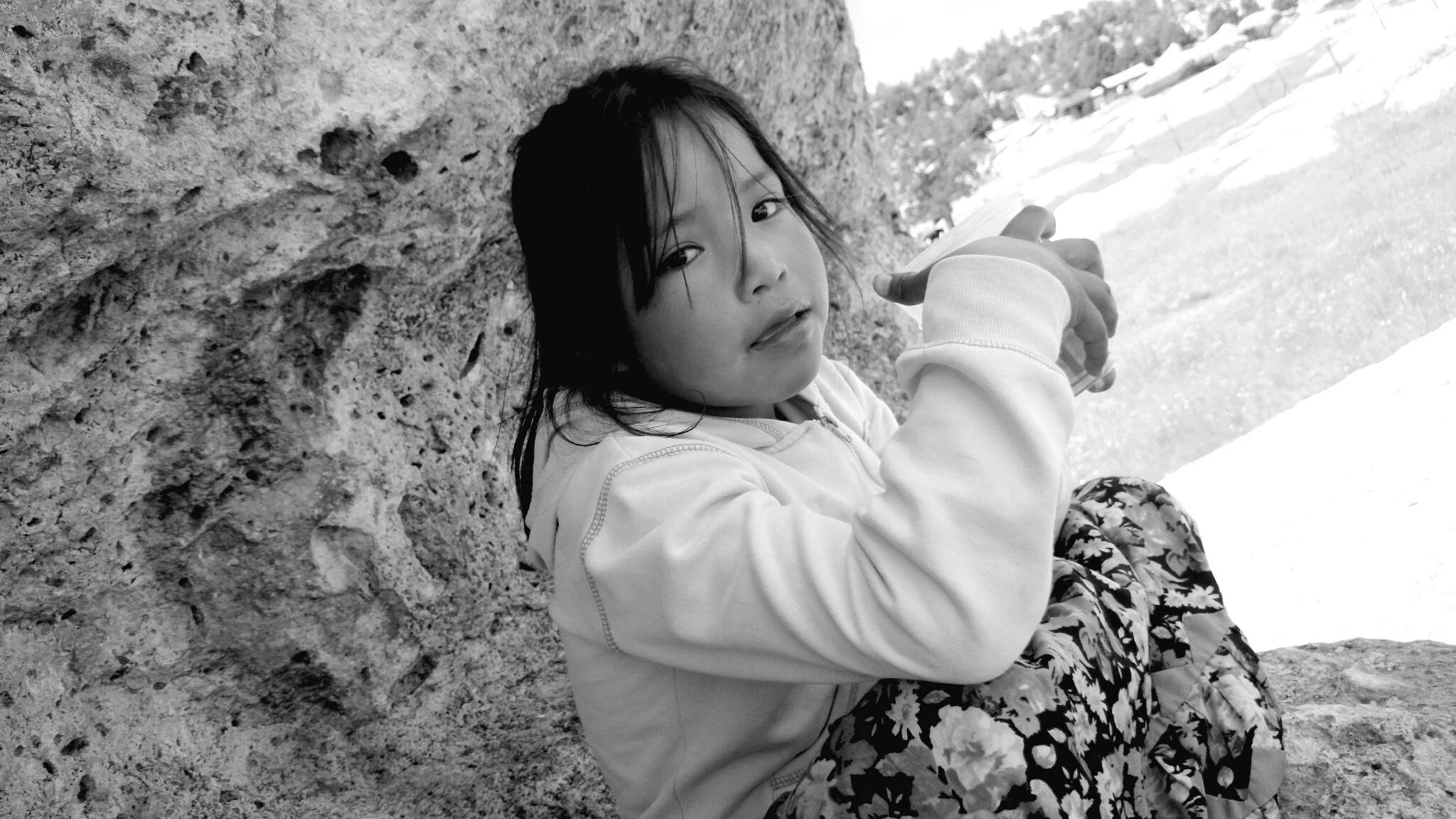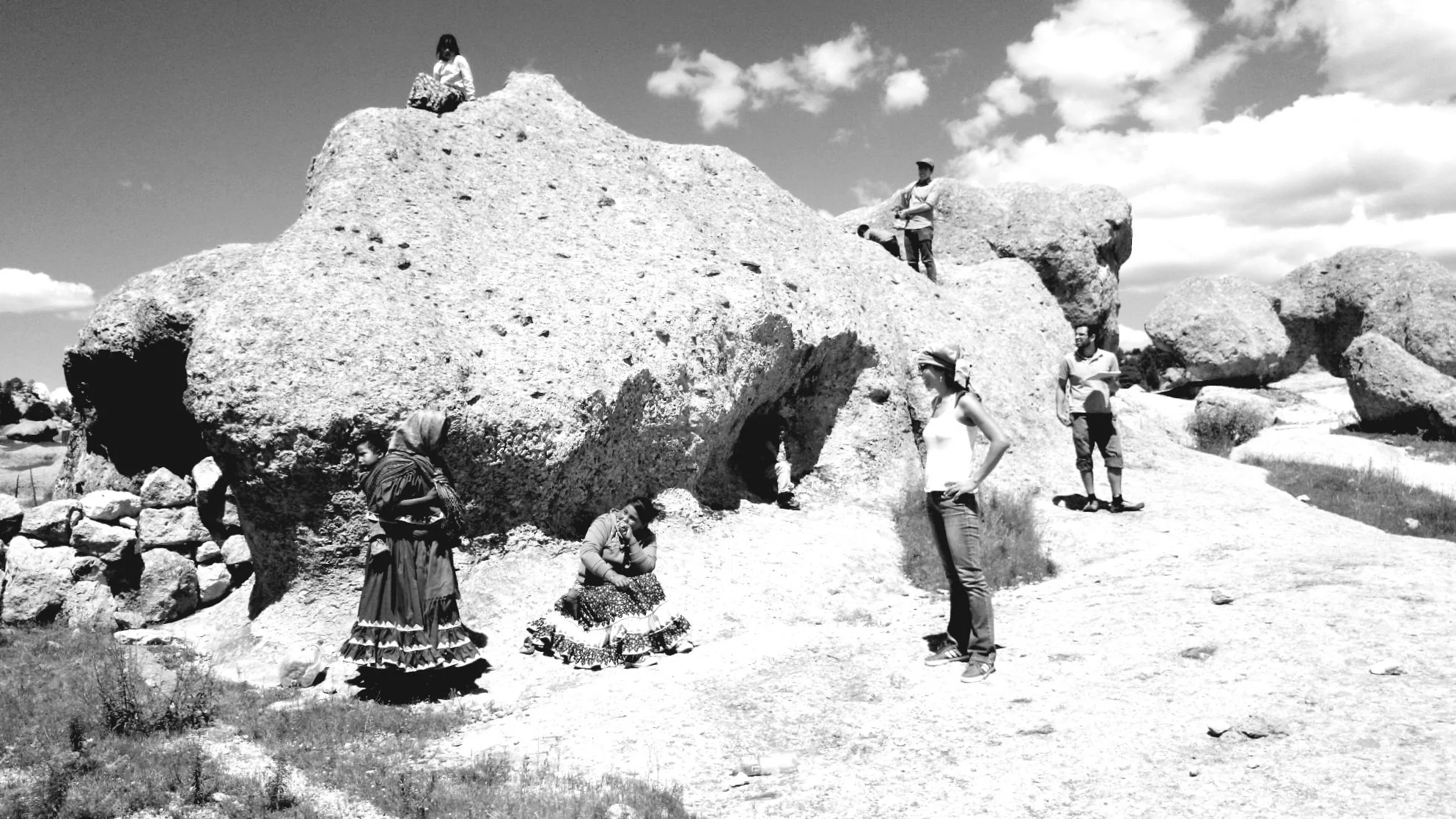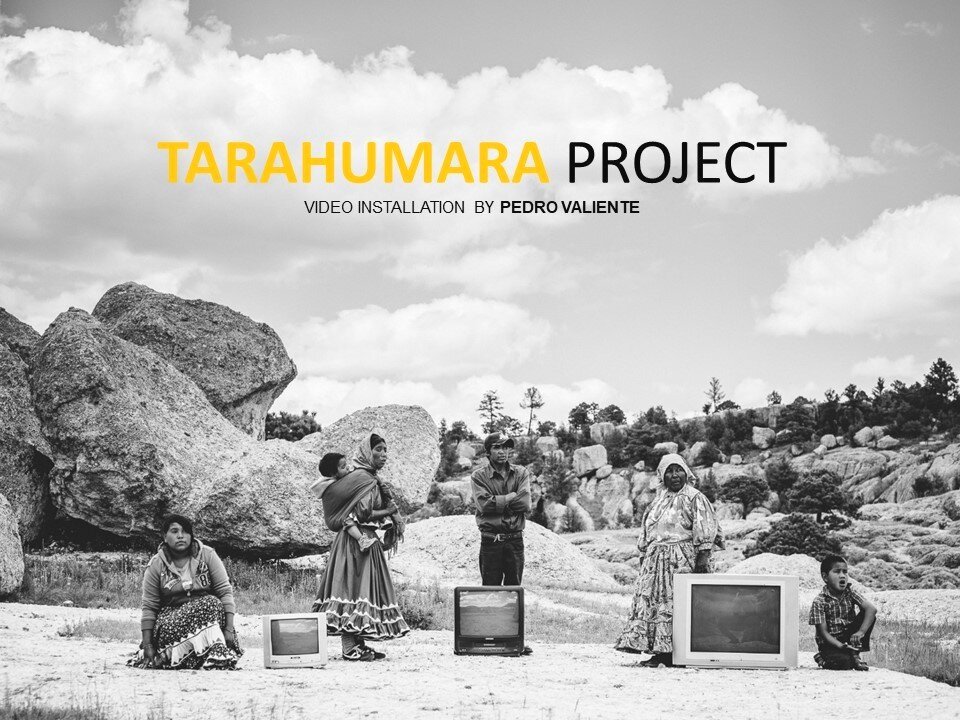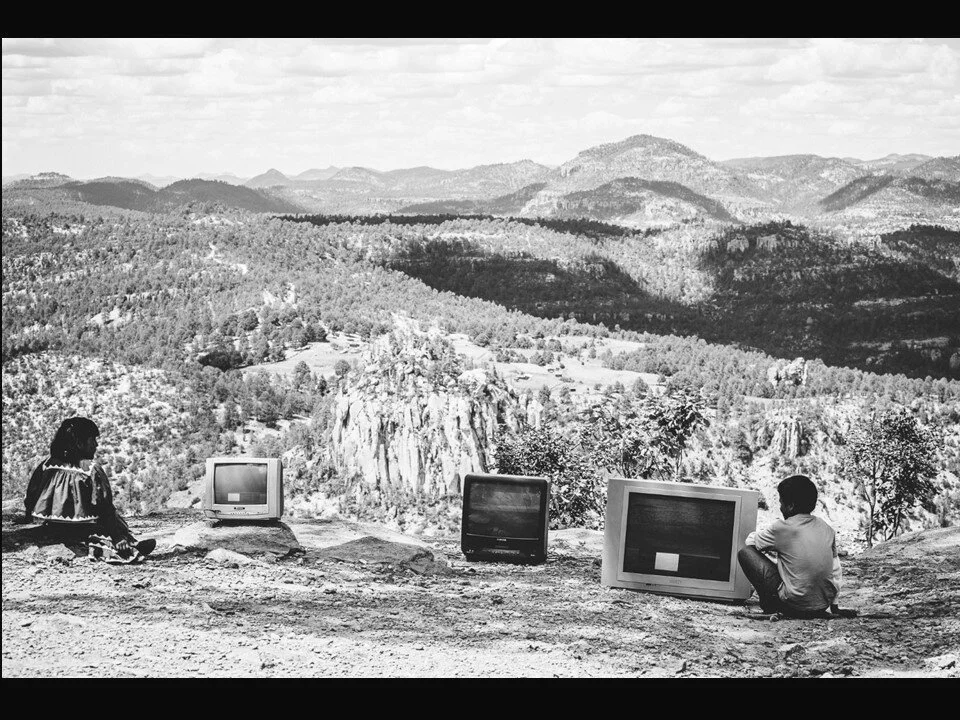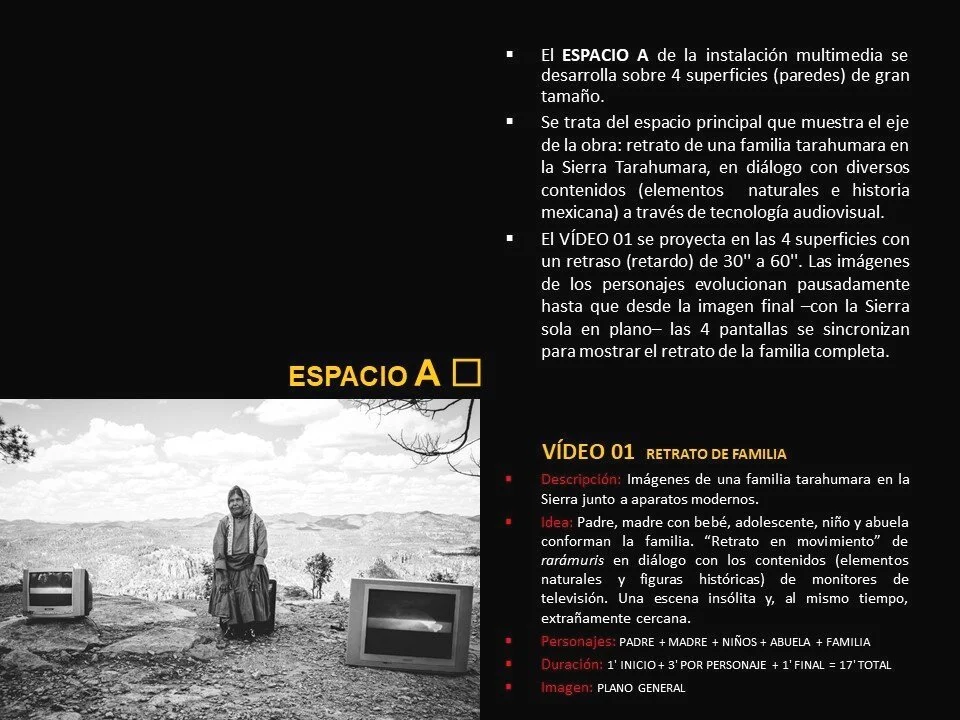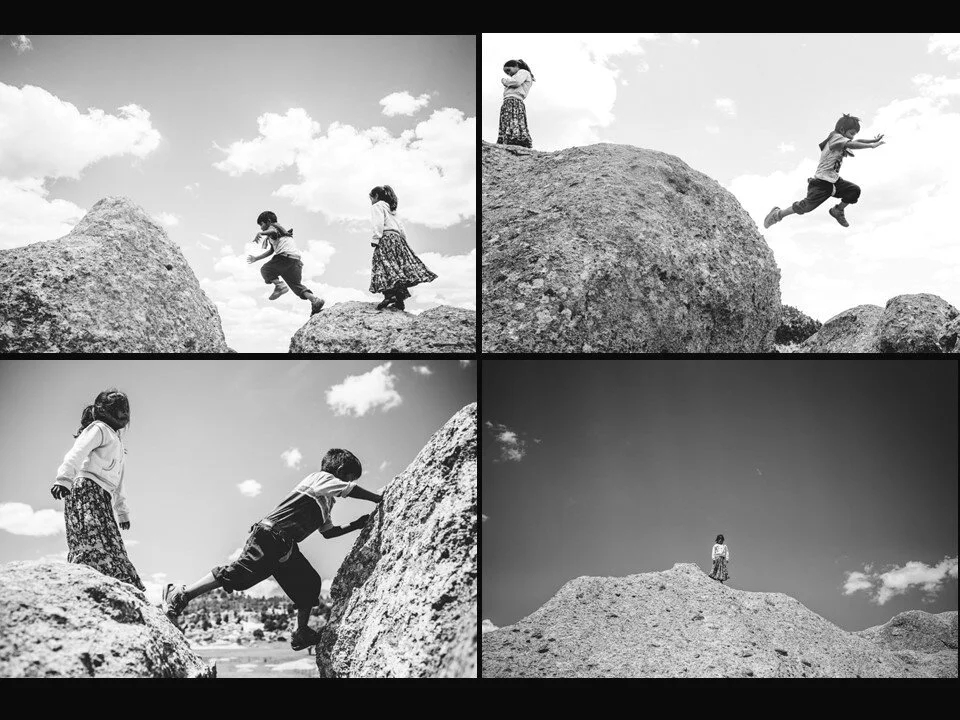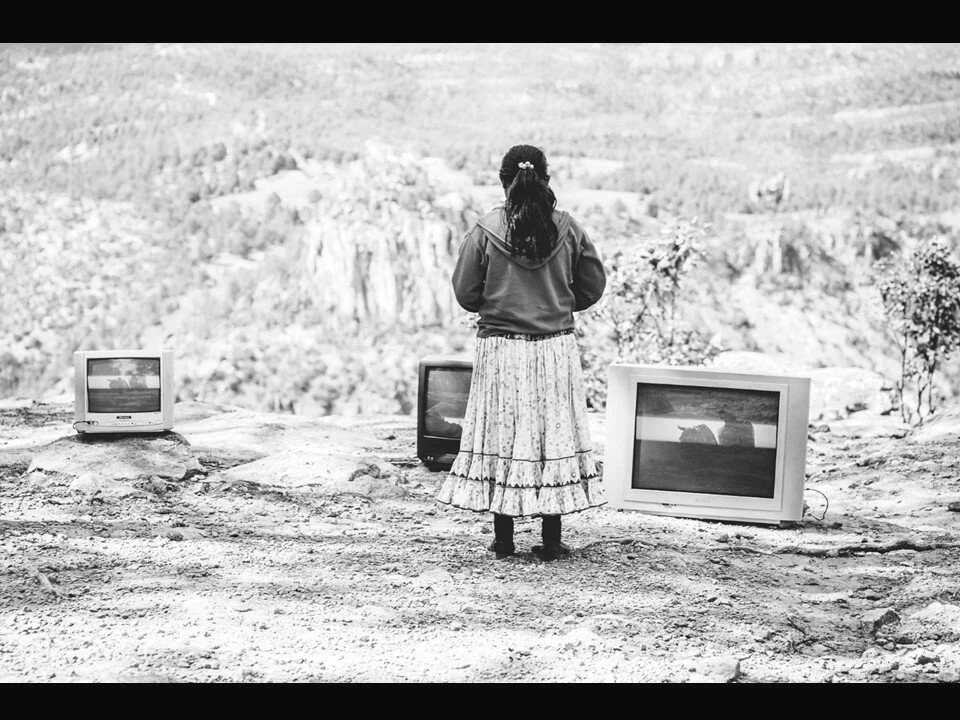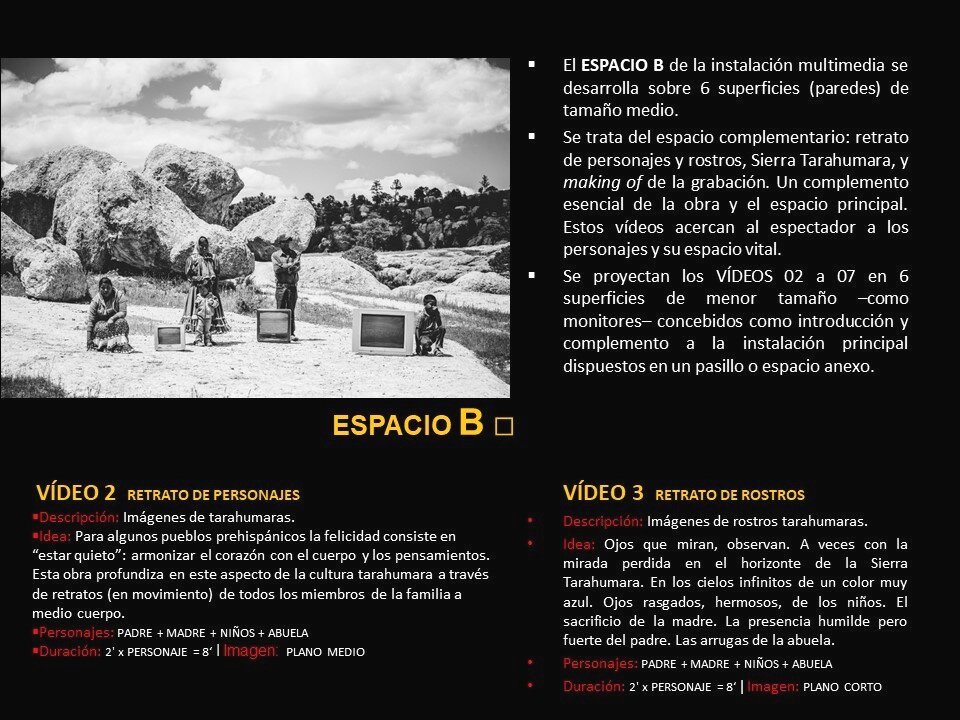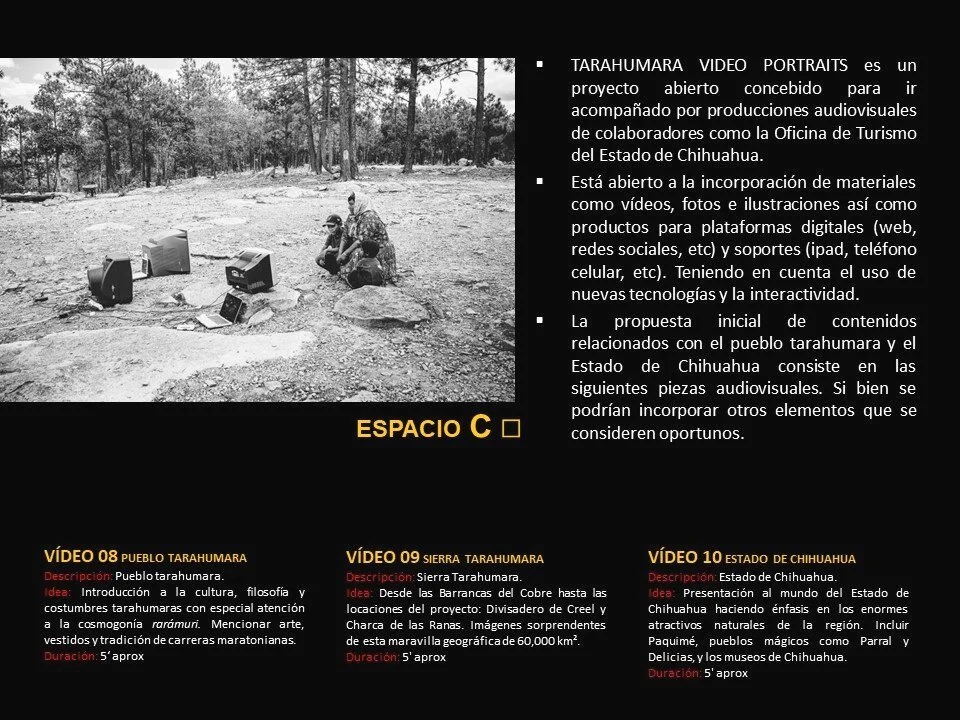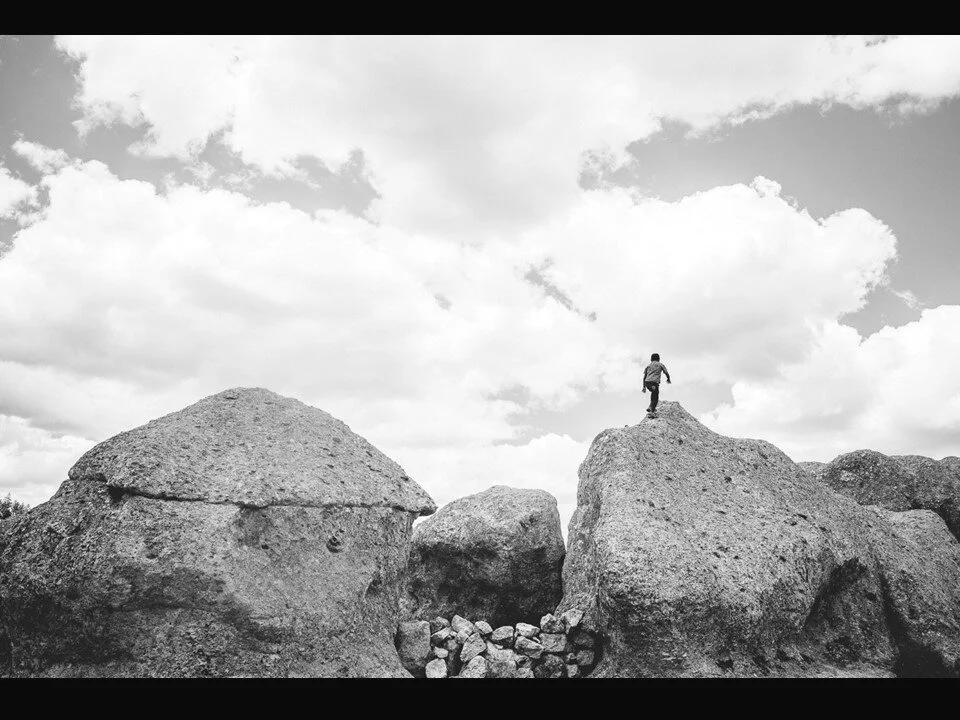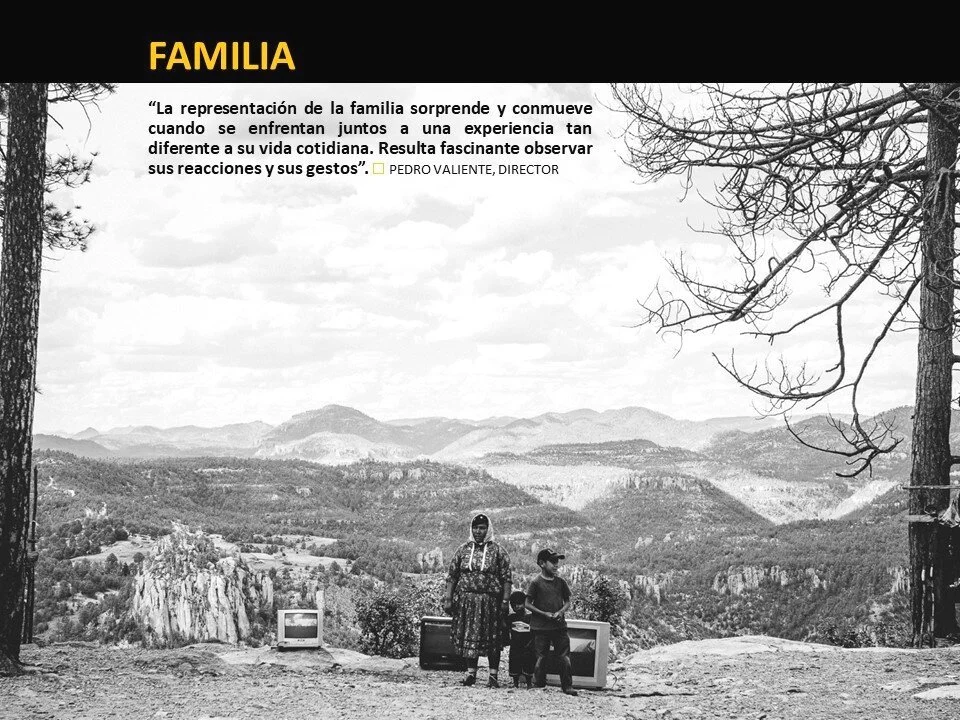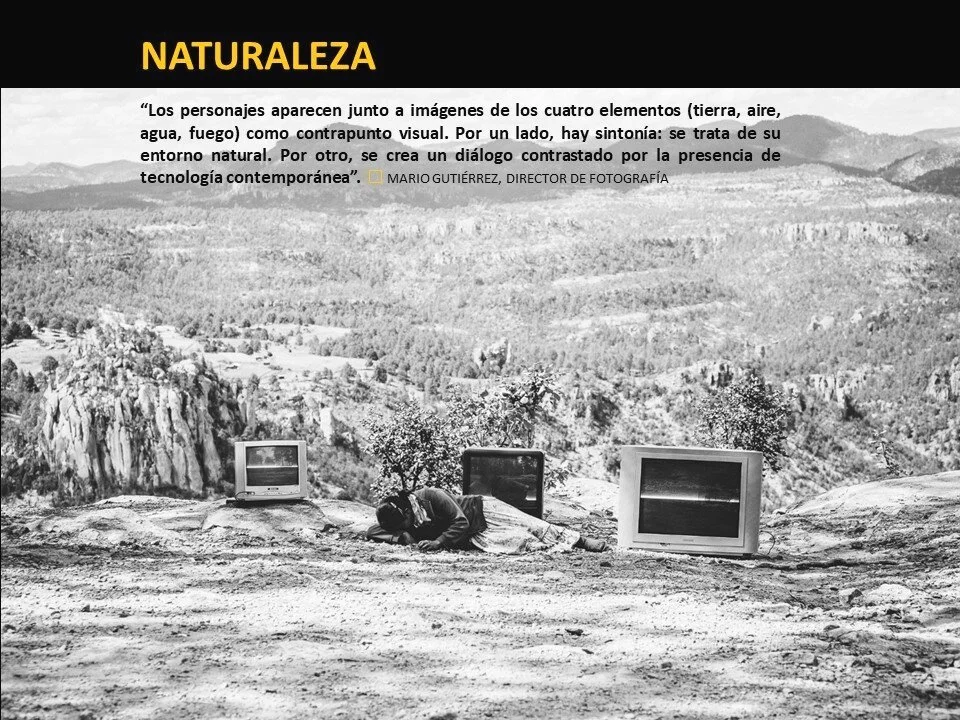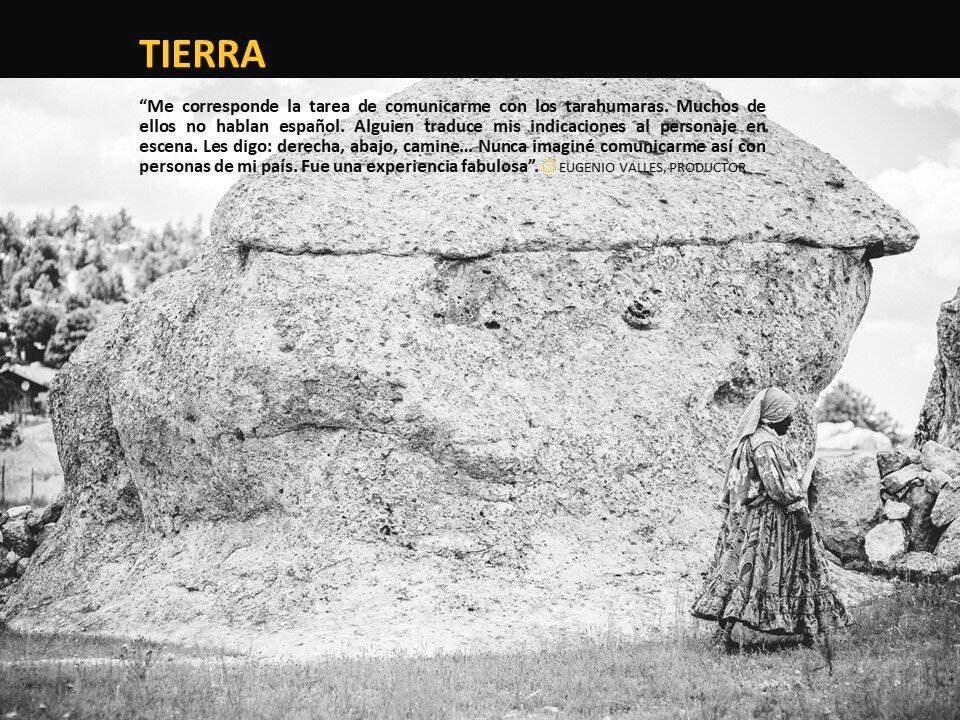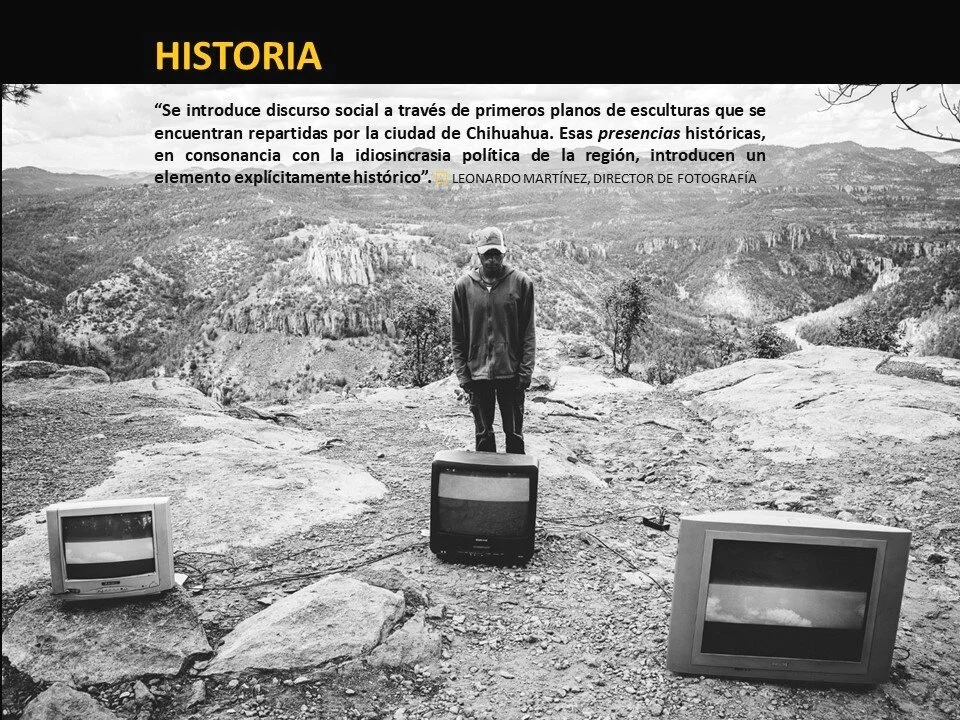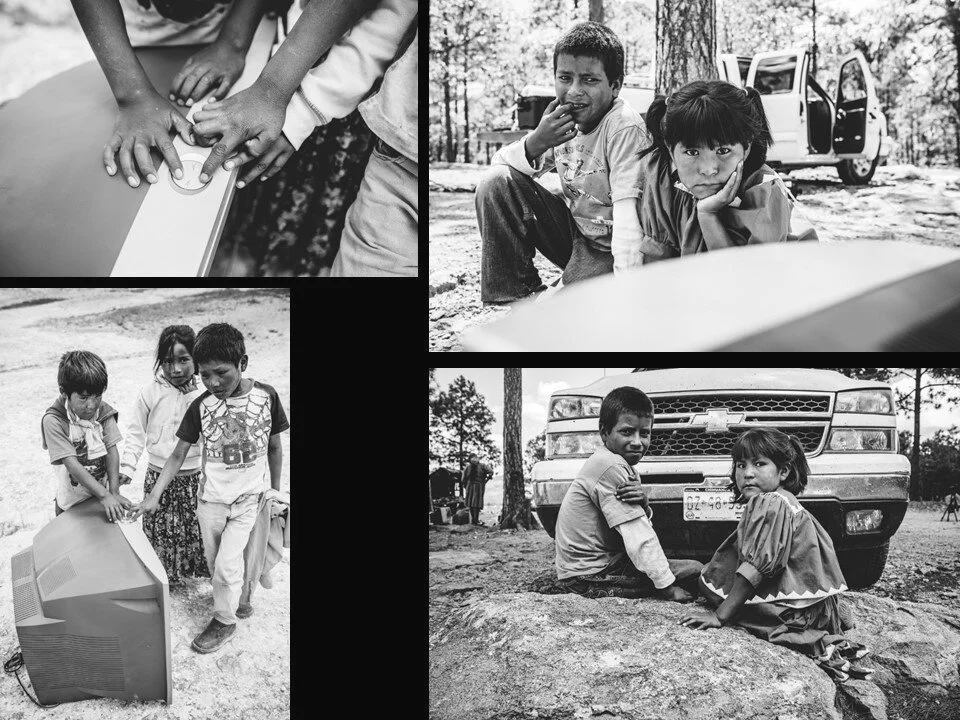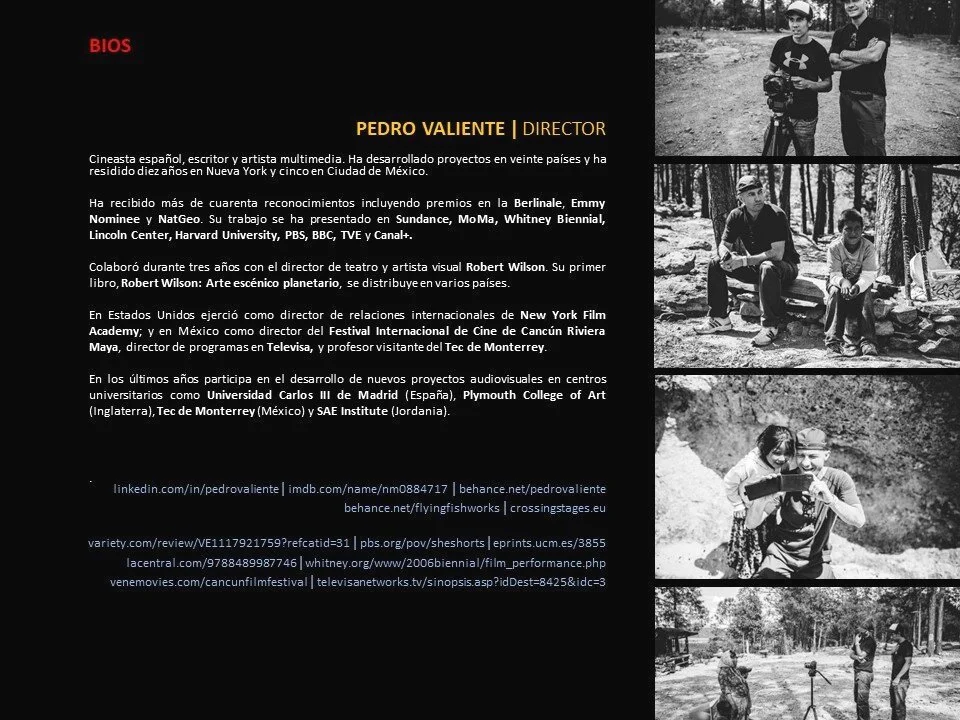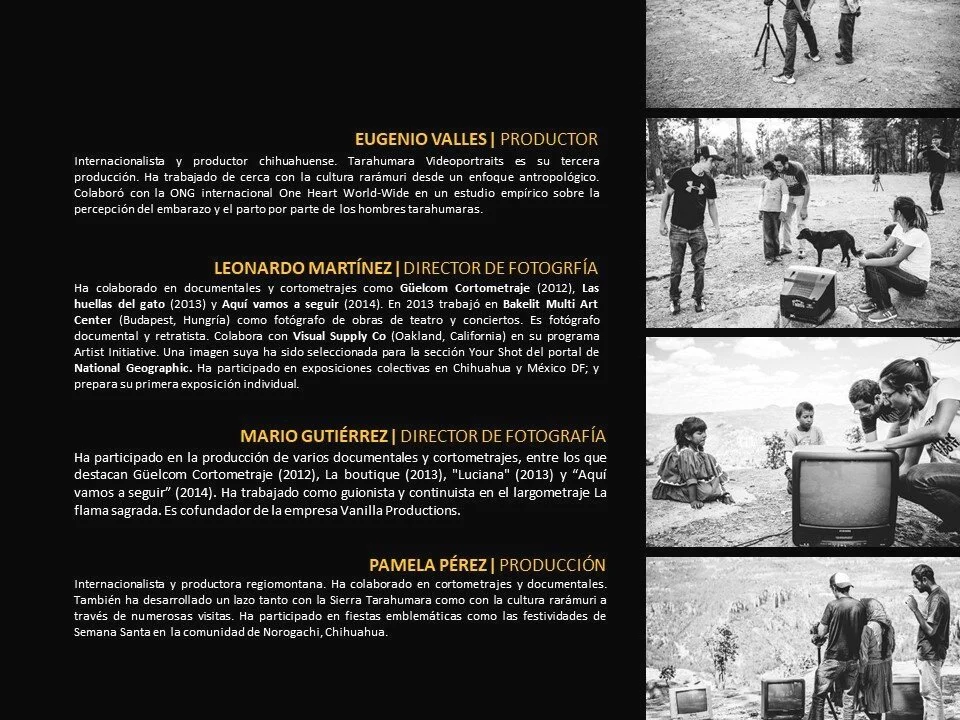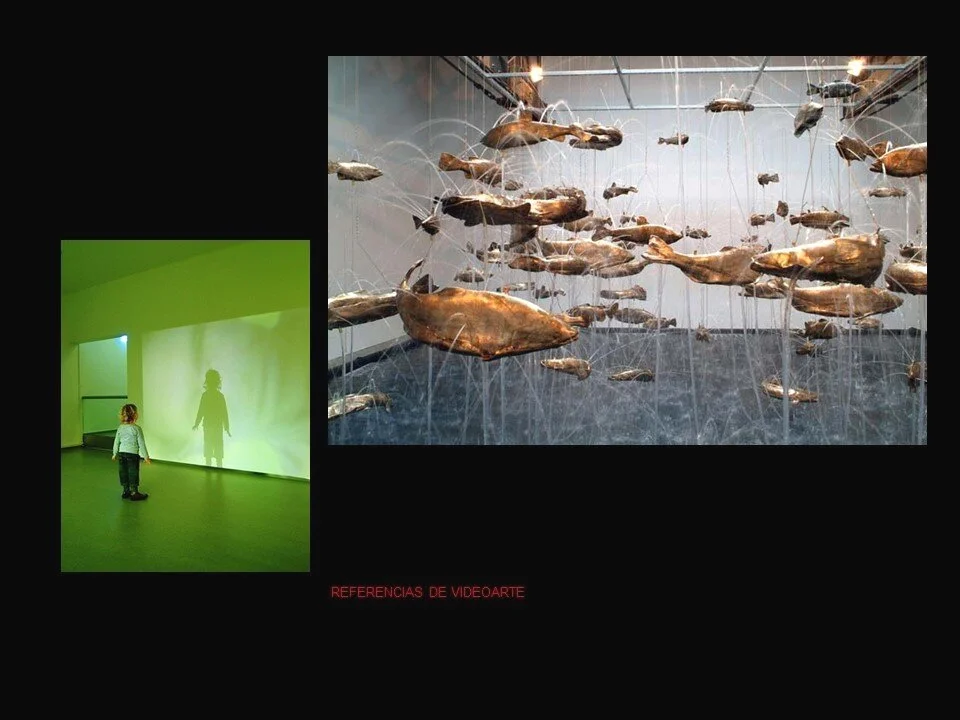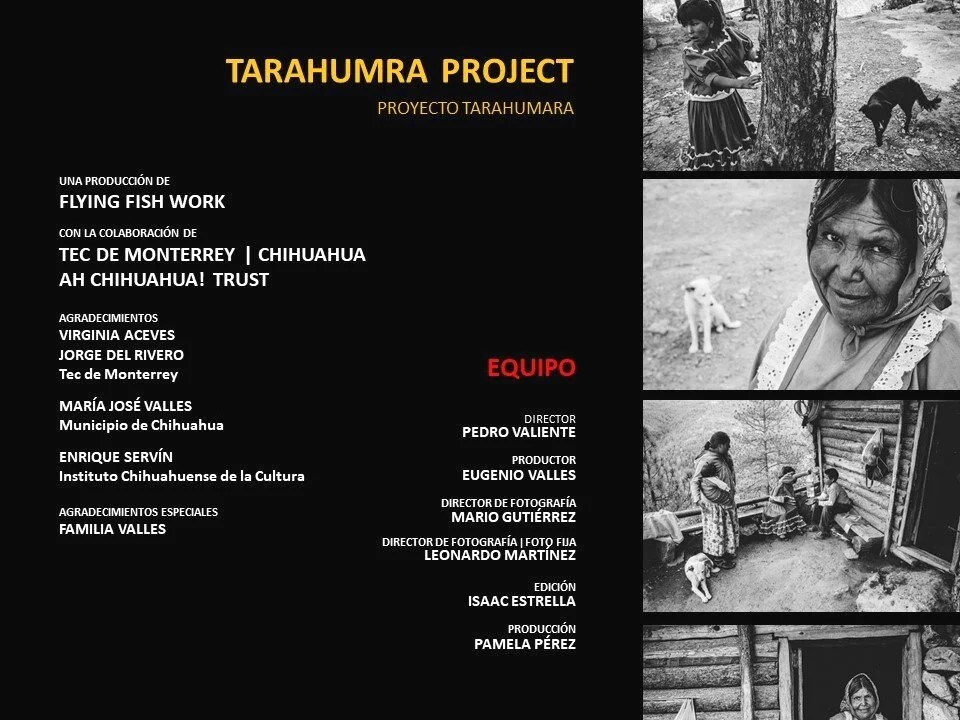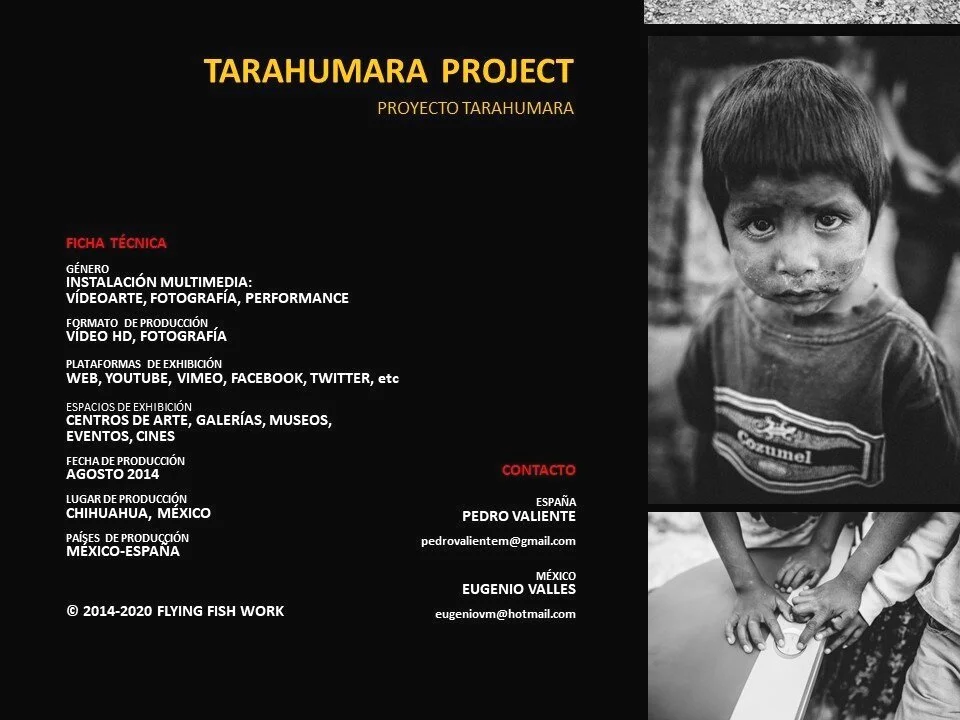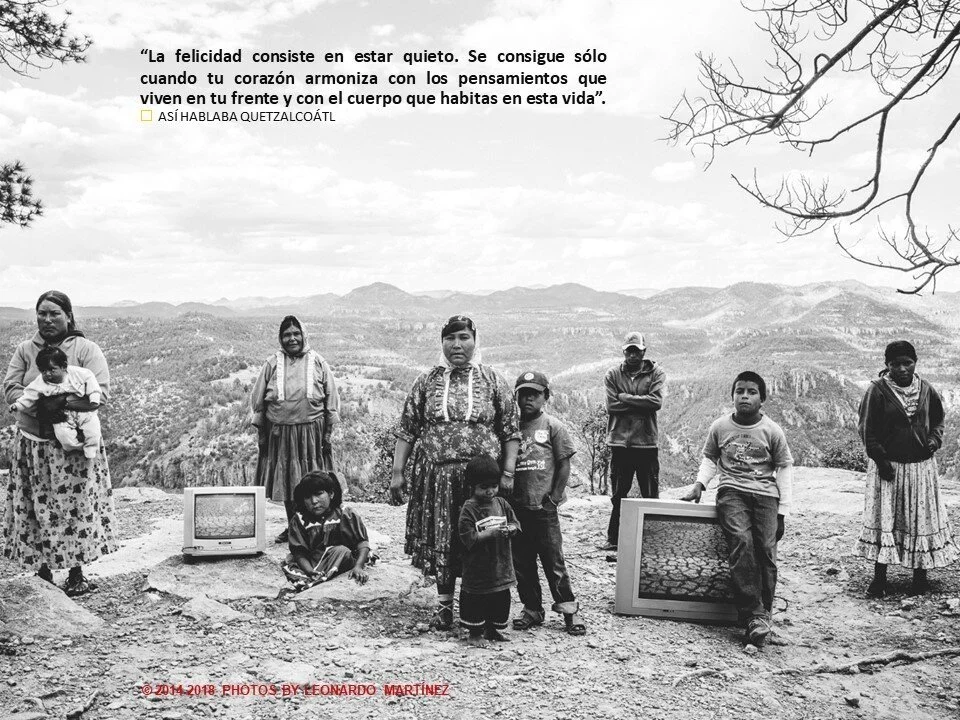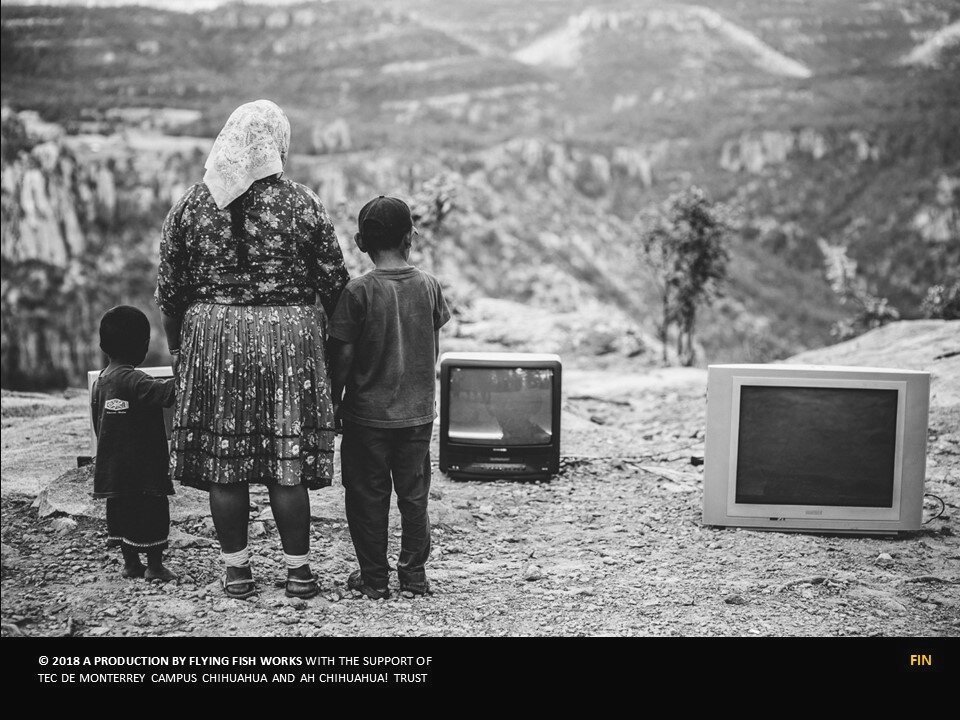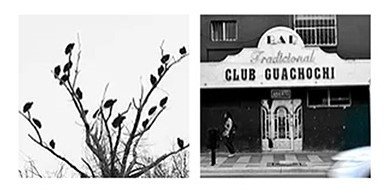TARAHUMARA PROJECT
(2024, Spain/Mexico, 7min) video installation
Video Art Installation
“Happiness consists of being still. It is accomplished only when your heart is in harmony with your the thoughts that live in your forehead and the body that you inhabit in this life.” [Quetzalcoatl Has Spoken] Tarahumara Project presents a contemporary view on legendary people in America as they face modern elements in a desert landscape. It’s a portrait of an enigmatic pueblo known in the world as unique runners. [IMDb]
SYNOPSIS Tarahumara Project is a look at the soul. A recollction of hidden memories. Father, mother, daughter, son, and grandmother enter the scene to establish a rare dialogue with television monitors in the middle of a desert of rocks. Images of the elements (earth, air, water, fire) appear as an invasion of modern times into their ancient way of life. I IMDb
CAST Two Tarahumara families: Father, Mother, Baby, Daughter, Son, Grandmother CREW Director/producer: Pedro Valiente I Producer: Eugenio Valles I Executive producer: Virginia Aceves I Postproduction producer: Isaac Estrella I DP: Mario Gutiérrez I Photography: Leonardo Martínez I Production coordinator: Pamela Pérez I Editor: Luis García I Video art editors: Didi Trujillo, Brandon Varela THANKS Tarahumara pueblo, Valles Medina family I Ivonne Juárez, Virginia Aceves, Isaac Estrella, Jorge del Rivero, Tecnológico de Monterrey I Maria José Valles, Municipio de Chihuahua SPECIAL THANKS In memoriam Enrique Servín, Instituto Chihuahuense de la Cultura TECH INFO Running time: 7min I Format: HD video, color & black/white I Country: Spain/Mexico I A production by Flying Fish Work and Tecnológico de Monterrey, Chih., with the support of the Tourism Board of Chihuahua State, Mexico I © 2024 Flying Fish Work
Tarahumara are Native American people of Northwestern Mexico who are renowned for their long-distance running ability. Originally inhabitants of much of Chihuahua State, the Rarámuri retreated to the Copper Canyon in the Sierra Madre Occidental on the arrival of Spanish explorers in the 16th century.
Tarahumara is the Spanish name for rarámuri: running foot or the ones with light feet. It’s one of the pre-Hispanic pueblos that keeps its traditions due to a stiff geography and an indomitable character: they were never conquered. Tarahumara may have passed from Mongolia to America for the Bering Strait. The Jesuits registered contact in 1606 as they settled officially at the end of the 19th century. They celebrate their beliefs integrating Catholicism and Shamanism with dances, offers, and tesgüinadas (parties drinking corn beer). Women wear vivid colored blouses and skirts, showing a stronger anatomy than men.
Tarahumara
“So many Tarahumara men, women, and children persist in distinctive, centuries-old cultural traditions in spite of their nearness to all the complexities and attractions of modern industrial society is an important part of the story.” [Tarahumara (1997) by Bernard L. Fontana/John P. Schaefer, The University of Arizona Press] “The Tarahumaras have been entering 100 mile races in hopes that people will hear of their tribe's plight and donate money to ease their situation in the rugged mountains of Chihuahua state.” [George Ramos, Los Angeles Times, 09/25/96] I LINKS Running Born to Run (2009) by Christopher McDougall, Knopf Ed. I Culture Britannica I Biomechanics Harvard University I Film University of California, Berkeley
Antonin Artaud (1896-1948) is a French playwright, poet, essayist, actor, and theater director. Considered among the most influential figures in modern drama theory, Artaud was involved with Surrealist artists and experimental theater groups. In Theatre and Its Double (1938) Artaud looks at Eastern theater; and in Theatre of Cruelty (1932) presents "a primitive ceremonial experience intended to liberate the human subconscious and reveal man to himself." Artaud set the audience in the middle of the “spectacle” to be “engulfed and physically affected by it” using light, sound, and performance. His work influenced the Theater of the Absurd, Jean Genet, Samuel Beckett, and inspired contemporary arts. Artaud traveled to Mexico in 1936, stayed with the Tarahumara, and wrote Voyage to the Land of the Tarahumara.
LINKS Music: The Peyote Dance (2019) with Patti Smith I Art at MoMA I Antonin Artaud: Works on Paper (1996-1997) curated by Christina Houstian I Book: Selected Writings (1988) edited by Susan Sontag, University of California Press I Book: Artaud and After (1977) by Ronald Hayman, Oxford University Press I Book: México y Viaje al país de los tarahumaras (1984) by Antonin Artaud, FCE
Antonin Artaud
Tarahumara Project was produced in Sierra Tarahumara in Chihuahua State, Northern Mexico. A disruptive element comes through the presence of television monitors as in the work by video art pioneer Nam June Paik. Screens show (digital) images of natural elements in a natural environment. Although neither the apparatus nor the visuals alter the calm atmosphere. It’s conceived to be projected on (at least) four visual displays such as screens, monitors or walls. The classic film language is deconstructed since continuity style and conventional flow of shots size are broken. SCREEN 1 Family members and all family wide shot. SCREEN 2 Family members medium shot. SCREEN 3 Family members close up. SCREEN 4 Landscape.
Tarahumara Project is an interdisciplinary project that integrates film, photo, graphic design, visual art, music, writing, and performance as well as digital work including sites and social media. The three works of Multiple Portraits can be screened in different forms and spaces including one by one and altogether; independently and simultaneously; in screening rooms, art centers and/or online. It’s a trilogy of visual portraits: cinematic, in motion, multiple, and simultaneous. I Photo: Tarahumara family in Barrancas del Cobre (Copper Canyon). I Behance Tecnológico de Monterrey
Tarahumara Project is connected with Multiple Portraits and productions and online platforms. It’s a production with the support of the Tourism Board of Chihuahua State, and Tecnológico de Monterrey. The context is Tec21 Educational Model in the frame of Work Integrated Learning.
Tarahumara Project (2024) Video Installation with Tarahumara families I The House of My Dreams (2026) Film in Quinta Gameros national museum I Barbaric Portraits (2014) Video Art at interdisciplinary program I The Barbaric Country (2013)
Site for Innovation Week I Poetry Marathon (2014) Literature Event in municipal park I Myths MX (2024) Arts Event in Quinta Gameros museum. I Photo: Tarahumara family in La Charca de las Ranas (The Frogs Pond)
PHOTO
Leonardo Martínez I Site
PHOTO
Pedro Valiente I Behance
Still figures in a moon-like landscape with modern technology seem strangely natural. Surrealistic and beautiful. There is something about a family facing together anything in life: good or bad. In this case, two Tarahumara families confronted a Mexican/Spanish crew who wanted them to pose still in front of a camera surrounded by television monitors. It was fascinating to observe their reactions and gestures. And a true privilege. — Pedro Valiente director
One of my tasks was to communicate with our characters. Rarámuri language belongs to the Uto-Aztecan family. Many of them don’t speak Spanish. So, the daughter translates my indications to each person on set. I tell them: ’Enter, stay, walk…’. I never imagined that one day I was going to talk to fellow Mexicans on this way. It was really an incredible experience. — Eugenio Valles producer
We filmed one day a family near a cliff and the next day another one in La Charca de las Ranas. Characters appear along with the elements (earth, air, water, fire) as a counterpoint. Somehow, there is harmony: its their natural environment. And then an artificial dialogue is constructed with the presence of contemporary equipment. Of course, all under intense sunlight!! — Mario Gutiérrez DP
When Surreal is Real
I work a lot with people in the streets. I love urban portraits. So it was a great opportunity to be close to this culture. Capturing Rarámuri expressions is like jumping into the void. — Leonardo Martínez photo
The Rarámuri were never conquered when the Spanish arrived in the 1500s. Nowadays, most of them still practice a traditional lifestyle. We all approach this unique project with respect. — Isaac Estrella postproduction producer
My training in International Relations and social work met through the contact with communities. Filming this piece I found amazing human qualities. Rarámuri people speak quite a lot in silence. — Pamela Pérez production coordinator
Photo: Tarahumara Project behind scenes
“The shape of ideas and plans transforms magically when a work of art comes to life. After navigating defiant roads and uncertainties, it’s incredible to see our imaginations take form in the real world. This time, it happened in the most unexpected hands —those of the Tarahumara people. We spent time with this enigmatic community: observing, filming, talking, eating, and enduring the harsh sunlight and resilient landscape. Over two days, we filmed two families. The first was extremely reserved, but a connection emerged through the second family’s teenage daughter, Alma.
I was captivated by the children’s playful curiosity. One little girl, sensing my unfamiliarity with games, grabbed my phone and instantly knew I didn’t play. Sheltered beneath a rock, I reflected on our intent —to introduce modern technology as a disruptive force, echoing Antonin Artaud’s ideas, to capture the audience’s attention. But to my surprise, the children were already digital natives.
For The Barbaric Country —Chihuahua’s historical nickname— I proposed three visual concepts: a massive figure drawn on a football field, inspired by the prehistoric painting that resembles an astronaut; a container-box filled with balloons for a Samuel Beckett story; and the Tarahumara Project. The latter was influenced by an image from my early years as a theater writer in Madrid —an angel with vast wings and a blue sky projected onto his feet-monitors.
None of this would have been possible without Eugenio and María José Valles, who have long worked with communities and encouraged us to pursue the idea. We also discussed it with Enrique Servín, a linguistic genius and expert on native cultures, who spoke twelve languages. At Tecnológico de Monterrey, Virginia Aceves was the driving force behind our ventures, while Isaac Estrella played a crucial role in postproduction. Mario Gutiérrez wielded his camera with tireless precision, Leonardo Martínez captured stunning photo stories, and Pamela Pérez held the team and families together. In the end, the grandmother welcomed us into her home —a tiny wooden structure nestled against a rock. The Tarahumara people had entered our hearts.” — Pedro Valiente
Tarahumara is Running
“Tarahumara Project is a series of moving portraits —a modern painting in motion. Using still photography, primarily wide shots and motionless poses, the series creates a dialogue between an ancient culture and the contemporary world. Initially, we explored a socio-political angle, drawing inspiration from historic figures linked to Chihuahua: Pancho Villa (revolutionary leader, Chih.), Adelita (symbol of female soldiers, Chih.), David Alfaro Siqueiros (muralist, Camargo), Agustín Melgar (one of the Heroic Cadets, Chih.), Luis H. Álvarez (politician, Camargo), Antonio Ortíz Mena (diplomat, Parral), José Fuentes Mares (philosopher/writer, Chih.), Pedro de Jesús Maldonado (saint, Chih.), Felipe Ángeles (military strategist, Chih.), and Anthony Quinn (Hollywood actor, Chih.). The final result presents static figures against a moonlike landscape, intertwined with present-day technology. The Tarahumara, they said, had never seen anything like it before. Amid the harsh yet breathtaking terrain of the Sierra Madre, two Tarahumara families bring their mystical essence to life, standing in quiet defiance of modern culture. And yet, the children —effortlessly— master mobile phones.” — Flying Fish Work
Anthropology is Art
Tarahumara Project visual presentation in Spanish including texts by team members, and photo work by photographer Leonardo Martínez (Mexico), and filmmaker Pedro Valiente (Spain). I LINK Behance Visual
VISUALS
The Barbaric Country is a website that presents culture, arts, history, and nature of Chih. State in Northern Mexico. A media project produced by students at semana i - Innovation Week 2013 at Tecnológico de Monterrey, Chih.. The Barbaric Country is connected with Tarahumara Project I Tecnológico de Monterrey I Innovation Week I The Barbaric Country I Site Website
WEBSITE
Multiple Portraits is a video installation trilogy that presents physical and mental deserts where life happens. It belongs to a transmedia universe of contents where the audience is free to create its own narrative navigating through interactive storytelling. Tarahumara Project (2024) Sierra Tarahumara, Mexico; Humans in the Desert (2022) Wadi Rum, Jordan; Penelope is Waiting (2015) Madrid, Spain.

